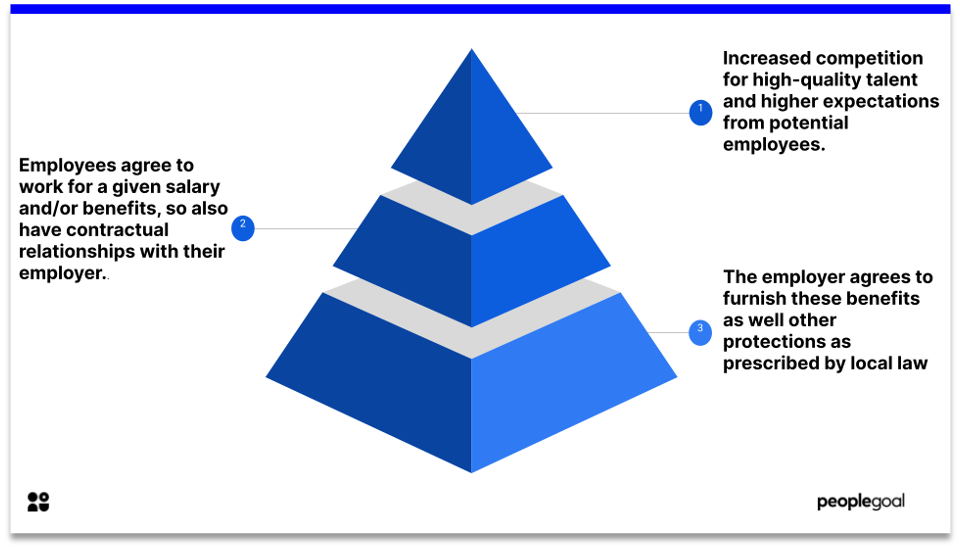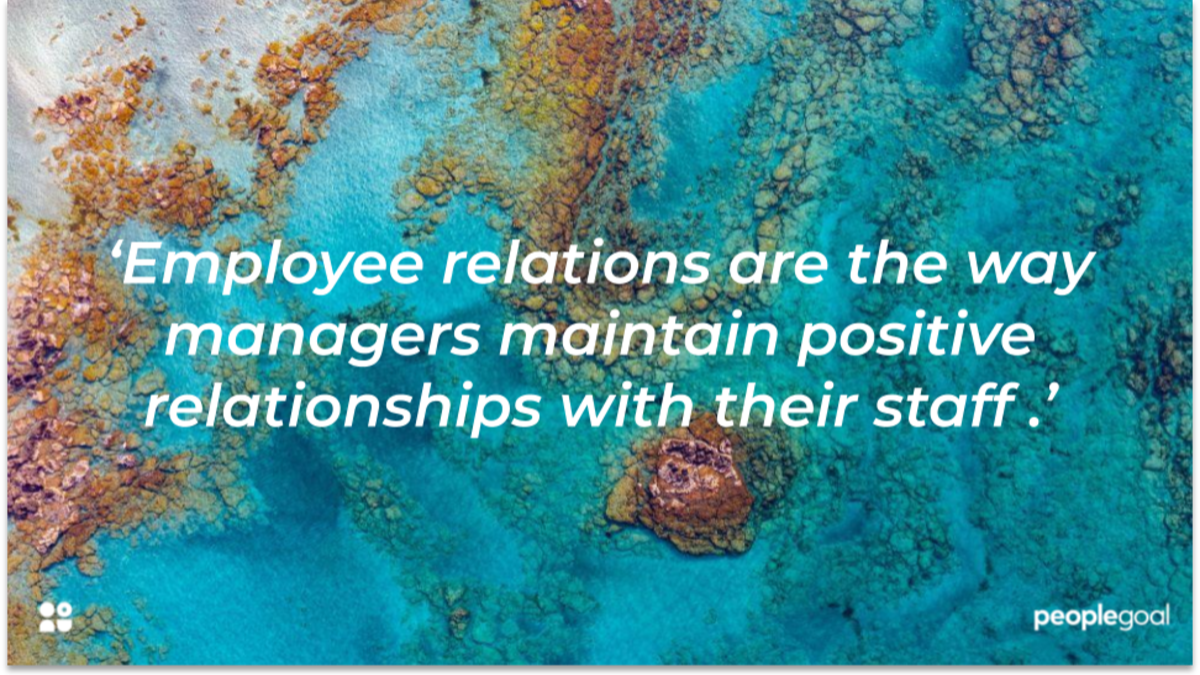George Bernard Shaw wrote that “The single biggest problem in communication is the illusion that it has taken place.”
Companies sometimes assume that so long as people are clear on the tasks they need to complete, there’s no need to improve their internal communications strategy.
In fact, employers that seek high employee engagement and innovation need to think more deeply than this. A company’s values should be communicated in an engaging way, on the daily. If managers want to get employees excited about new business opportunities, they should communicate plans, strengths and weaknesses in an open way.
Remote internal communications poses fresh challenges. When our workforce isn’t in the same physical space, there is less opportunity for informal communication to fill in the gaps of an incomplete internal communications strategy.
Below are some tips for creating a strategy that communicates business objectives clearly and makes complex workflows more cohesive.
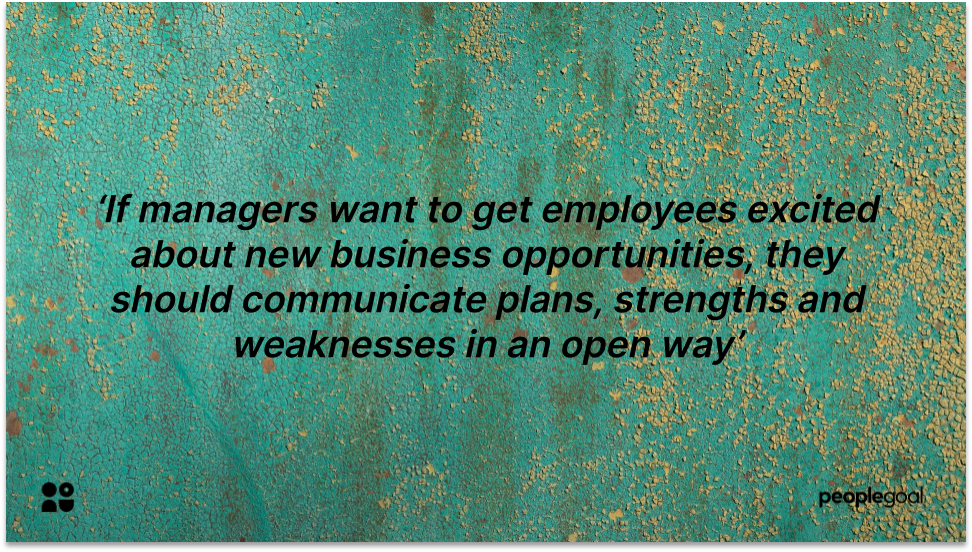
What is internal communications?
Internal communications is the process by which a company communicates to itself- from the C-Suite, to managers and employees.
Internal communications aims to create company-wide objectives and build community. Larger companies may have a dedicated internal communications team. IC communicates and formulate a strategy together with HR. In medium sized businesses, the responsibility will often fall to human resources.
Internal communications is also about change management. During the transition to remote work, HR teams drafted up communications strategies. This provided employees with the information they needed to adapt quickly.
Below we explore how to make internal communications interactive. Modern HR teams go beyond newsletters and weekly round ups in their strategies.
Benefits of Internal Communications
Without excellent internal communications, people processes struggle to make an impact. During remote work, they are even more crucial as contact points are challenged.
Communicating plans clearly means better engagement, as employees feel better informed about HR strategy. It also means HR successes are better communicated – which strengthens your team!
- Improve employee engagement
- Improve awareness of company culture and values
- Boosts communications externally and internally (as teams more cohesive)
- Better outcomes
- Resilient in times of change
Link with learning and development
Many employees are curious about business opportunities or ongoing deals. They may have ideas to pitch, or would like to learn more about other departments.
Companies with great internal communications are also companies that inspire employee development.
Employees are able to learn from superiors. This exposure is invaluable, and can improve employee retention.
Sometimes upskilling is required for this. Think about how learning and development programs can inform employees of processes at higher levels of a company.
For example, Yelp has ‘stretch roles’. This means they have responsibilities just above their tenure or job specification. This is a great way to communicate what happens at all levels of a company – and shows how internal communications can help employees improve.
How to link Learning and Development with Internal Communications
- Hold ‘lunch and learns’
- Organize training that opens up employees to other departments and company levels
- Create a culture of openness and transparency
- Avoid silos
- Encourage employees to share their views
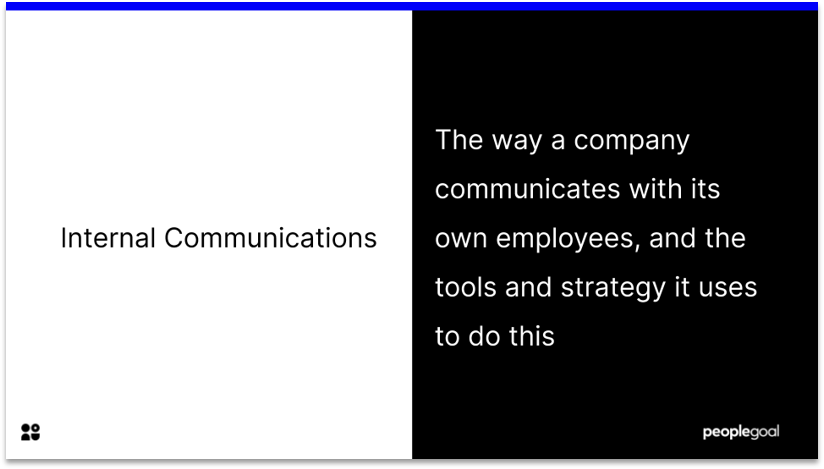
Ensure managerial support for internal communications strategy
Managers are key to great communication in the workplace. Where possible, involve them in the process of producing and delivering messages.
Make sure they have the resources they need to carry out a communications plan. Provide training for any social technology used.
Internal Communications: The Role of Managers
- First port-of-call for many employees
- Make communications relevant to specific teams
- Raise awareness through daily check-ins and one-on-ones
- Use a range of communication channels, intranet or Slack, to highlight areas of focus
- Motivate employees towards objectives
- Set actionable tasks towards business goals
Use technology to overcome the distance
Social technology was key to internal communications well before the pandemic. Now, it is crucial.
Intranets are becoming outdated. As we scroll through years of tabs and folders, employees often can’t find the information they need easily.
Employees are accustomed to communication in real-time – through instant messaging or discussion boards. Try to emulate this in your communication technology. Slack can be great for quick, regular communication.
Internal social media, such as Workplace by Facebook, can be a great investment. According to Reuters, 46% of companies are planning to invest more in collaboration technology. Try to be creative about how you use these networks.
Things to bear in mind with internal social media
- Use discussion boards for brainstorming ideas
- Use for social discussions to tackle isolation – from favorite movies to lunch break ideas
- Do not allow hate speech or inequitable use of social media
- Run polls for insight from employees

Ensure that two-way communication is possible
Great internal communication is not just top-down. Employees at all levels should have an opportunity to respond. Whether through discussion boards or employee surveys, encourage employees to speak up.
There are many benefits to this. Firstly, it ensures employees are actively involved in communications. Participation is key to making an impact. Secondly, it makes communications responsive, ensuring it is relevant to the current needs of the company.
Employees should always have channels through which to voice concerns.
Creating opportunities for two-way communication
- use employee surveys to guage employee sentiment
- daily check-ins in which managers ask employees for their perspective
- discussion boards on internal socal media
- opportunities for employees to give ‘recognition badges’ to their colleagues on internal social media
- create a culture of open communication – where no problem is too small
Keep it fun and compelling
Employees and managers are often too engrossed in their daily tasks to make time to follow internal communications.
By making it fun and compelling, your more likely to improve engagement. It’s also important that internal comms starts a conversation – this is always a good sign that IC is hitting the right key.
B.C Pension’s podcasts “A Table with Laura” and “Staff Cast” are a great example of this. “A Table with Laura” is CEO focused, whereas “Staff Cast” is employee driven. It’s important for executives to be transparent and build trust. But employees should also have a space they can take ownership of.
In times of change, this is key. Make sure all company levels are engaged in the discussion about change – whether it’s a new HR software or a transition to remote work.
It all starts with a clear message. Think about affect – CIPD recommends that HR/ IC ask itself ‘what do you want the audience to think, feel or do as a result?’.
Don’t try to fix everything at once. Is there a particular value your organization stands for? For example, you might hold an ‘Inclusive Workplaces’ week, in which you ask employees what an inclusive workplace means for them.
Tips for great internal messaging
- Think about affect – how to make employees see meaning and purpose around your message
- Build community around your message, e.g. through virtual lunch and learns, discussion groups
- Start a conversation
- Allow employees to take ownership of the process, whether by offering feedback or having a voice in how sessions are run
- Use all the technologies at your disposal
- Keep messaging focused, e.g. on a single value or project
Use a range of methods for internal communications
Not all of us are social media buffs. Some people prefer more one-on-one forms of communication. By making the strategy clear to managers, they can highlight key points in virtual face-to-face meetings.
Manager town halls or Q&As can also be a great way to communicate relevant, timely information. In times of change, leaders should make themselves available. This reassures employees and can provide a clear sense of direction. Town halls can be effective when done virtually.
Use live webinars so that employees can tune in and hear the latest news in a clear, informal setting.
Project management software can help assign tasks in a clear way, and make a company’s Objectives and Key Results visible for all.
The key is to cast the net wide – so that HR can support all employees.
PeopleGoal have a Communications Guide for HR leaders rolling out PeopleGoal software in their company. It’s a great example of how IC eases transitions in growing organizations.
A range of platforms for internal communications
- Webinars
- Virtual Lunch and Learns
- Internal social media
- Virtual town halls
- Live streams on social media with comments function
- Train managers for one-on-ones and daily check-ins
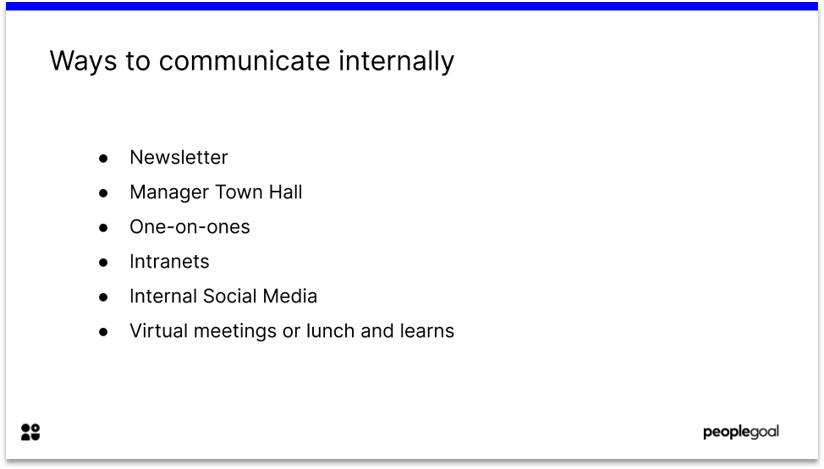
Internal communications are more important than ever
In the world of remote work, clear, reassuring internal communications have never been so crucial. HR and IR teams with high-quality strategies create more engaged employees and more cohesive business practices.
PeopleGoal’s Company Objectives app clarifies company goals, so that everyone has a sense of common purpose. To find out more, book a demo today.
Ready to 3x Your Teams' Performance?
Use the best performance management software to align goals, track progress, and boost employee engagement.


